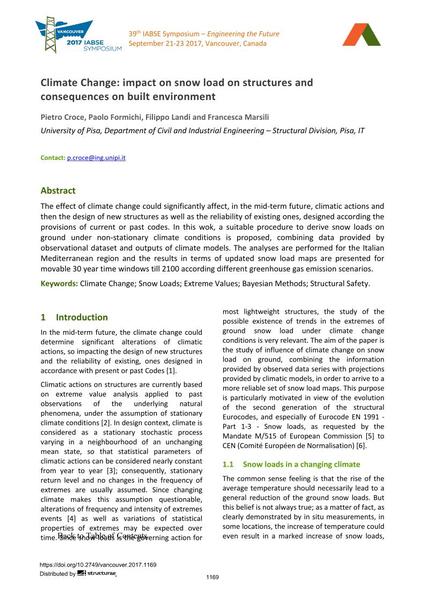Climate Change: impact on snow load on structures and consequences on built environment

|
|
|||||||||||
Détails bibliographiques
| Auteur(s): |
Pietro Croce
Paolo Formichi (University of Pisa, Department of Civil and Industrial Engineering – Structural Division, Pisa, IT) Filippo Landi (University of Pisa, Department of Civil and Industrial Engineering – Structural Division, Pisa, IT) Francesca Marsili (University of Pisa, Department of Civil and Industrial Engineering – Structural Division, Pisa, IT) |
||||
|---|---|---|---|---|---|
| Médium: | papier de conférence | ||||
| Langue(s): | anglais | ||||
| Conférence: | IABSE Symposium: Engineering the Future, Vancouver, Canada, 21-23 September 2017 | ||||
| Publié dans: | IABSE Symposium Vancouver 2017 | ||||
|
|||||
| Page(s): | 1169-1176 | ||||
| Nombre total de pages (du PDF): | 8 | ||||
| Année: | 2017 | ||||
| DOI: | 10.2749/vancouver.2017.1169 | ||||
| Abstrait: |
The effect of climate change could significantly affect, in the mid-term future, climatic actions and then the design of new structures as well as the reliability of existing ones, designed according the provisions of current or past codes. In this wok, a suitable procedure to derive snow loads on ground under non-stationary climate conditions is proposed, combining data provided by observational dataset and outputs of climate models. The analyses are performed for the Italian Mediterranean region and the results in terms of updated snow load maps are presented for movable 30 year time windows till 2100 according different greenhouse gas emission scenarios. |
||||
